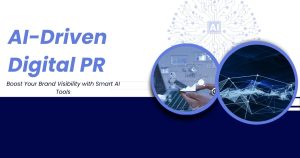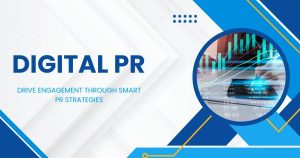How to Do Digital PR: A Complete Guide for Modern Brands

Digital PR has transformed the way businesses build their reputation and reach their audiences online. Unlike traditional PR, which relied heavily on print media and broadcast channels, digital PR leverages the power of the internet to create meaningful connections between brands and their target markets.
This comprehensive guide will walk you through everything you need to know about digital PR—from understanding its core principles to implementing effective strategies that drive real results. You’ll discover practical techniques, proven tactics, and actionable insights that can help your brand stand out in the crowded digital landscape.
What is Digital PR?
Digital PR combines traditional public relations tactics with digital marketing strategies to build brand awareness, credibility, and online visibility. It focuses on earning coverage and mentions across digital platforms, including online publications, blogs, podcasts, social media, and industry websites.
The primary goal of digital PR is to secure high-quality backlinks, increase brand mentions, and improve search engine rankings while building genuine relationships with journalists, influencers, and key stakeholders in your industry.
Key Differences Between Traditional and Digital PR
Traditional PR typically involves pitching stories to print newspapers, magazines, radio stations, and television networks. Digital PR expands this approach to include online-first publications, digital-native journalists, bloggers, podcasters, and social media influencers.
Digital PR also offers better measurement capabilities. You can track link placements, monitor brand mentions, analyze referral traffic, and measure the direct impact on your website’s search engine performance.
Building Your Digital PR Strategy
Define Your Objectives
Before launching any digital PR campaign, establish clear, measurable goals. Common objectives include:
- Increasing brand awareness and recognition
- Improving search engine rankings through quality backlinks
- Driving referral traffic to your website
- Building thought leadership in your industry
- Managing or improving brand reputation
- Supporting product launches or company announcements
Identify Your Target Audience
Understanding your audience is crucial for effective digital PR. Consider both your end customers and the intermediaries who can help you reach them—journalists, bloggers, influencers, and industry experts.
Create detailed personas for each group, including their preferred communication channels, content consumption habits, and the types of stories that resonate with them.
Research Your Media Landscape
Compile a comprehensive list of digital publications, websites, and influencers relevant to your industry. This includes:
- Industry-specific online publications
- General business and technology websites
- Influential blogs and personal websites
- Podcasts in your niche
- Social media influencers and thought leaders
- Journalists who cover your industry
Use tools like HARO (Help a Reporter Out), Muck Rack, or Prowly to identify and connect with relevant media contacts.
Content Creation for Digital PR

Develop Newsworthy Content
The foundation of successful digital PR lies in creating content that journalists and publishers want to share. Focus on stories that offer genuine value to their audiences.
Data-Driven Stories: Original research, surveys, and industry reports often generate significant media interest. Journalists appreciate access to exclusive data that supports their reporting.
Expert Commentary: Position your leadership team as industry experts by offering insights on trending topics, regulatory changes, or market developments.
Company Milestones: Significant achievements, partnerships, funding rounds, or expansion announcements can generate media coverage when presented compellingly.
Create Compelling Press Releases
Write press releases that follow journalistic standards and provide clear value to readers. Include:
- A strong headline that captures attention
- A compelling lead paragraph answering who, what, when, where, and why
- Supporting quotes from relevant executives or experts
- Background information and context
- Clear contact information for follow-up
Remember that digital press releases should be optimized for online consumption, with shorter paragraphs and strategic keyword placement.
Leverage Visual Content
Visual elements significantly increase the likelihood of media pickup. Consider creating:
- Infographics that illustrate key data points
- High-quality images and graphics
- Video content for multimedia stories
- Interactive elements like calculators or quizzes
Building Media Relationships
Personalized Outreach
Generic mass emails rarely succeed in digital PR. Instead, research individual journalists and tailor your pitches to their specific interests and recent coverage areas.
Study their previous articles, understand their writing style, and identify topics they cover regularly. Reference their recent work when appropriate, and explain why your story would interest their specific audience.
Timing Your Pitches
Timing can make or break your digital PR efforts. Consider:
- News cycles and current events that might overshadow your story
- Industry conference schedules and trade show calendars
- Seasonal trends relevant to your business
- Publication deadlines and editorial calendars
Tuesday through Thursday mornings often yield the best response rates, though this can vary by industry and publication type.
Following Up Professionally
A single pitch rarely guarantees coverage. Develop a systematic follow-up approach:
- Wait at least one week before following up on initial pitches
- Provide additional value or new angles in follow-up communications
- Respect journalists’ time and preferences
- Track your outreach efforts to avoid duplicate contacts
Measuring Digital PR Success
Key Performance Indicators
Track metrics that align with your original objectives:
Brand Awareness Metrics:
- Media mentions and reach
- Social media engagement and shares
- Brand search volume increases
SEO Metrics:
- Number and quality of backlinks earned
- Improvement in search rankings
- Organic traffic increases
Website Performance:
- Referral traffic from media placements
- Conversion rates from PR-driven traffic
- Lead generation from media coverage
Tools for Measurement
Utilize both free and paid tools to track your digital PR performance:
- Google Analytics for traffic and conversion tracking
- Google Search Console for search performance monitoring
- Social media analytics platforms
- Media monitoring tools like Mention or Brand24
- SEO tools such as Ahrefs or SEMrush for backlink analysis
Advanced Digital PR Tactics

Newsjacking
Monitor trending news stories and industry developments for opportunities to insert your brand into relevant conversations. Provide expert commentary, alternative perspectives, or additional context that adds value to ongoing discussions.
Thought Leadership Content
Establish your executives as industry thought leaders through:
- Guest posting on authoritative industry websites
- Speaking at virtual conferences and webinars
- Participating in podcast interviews
- Contributing to industry reports and whitepapers
Crisis Communication
Develop protocols for addressing negative coverage or industry crises. Quick, transparent, and authentic responses can help protect your brand reputation and demonstrate leadership during challenging times.
Influencer Partnerships
Collaborate with industry influencers, bloggers, and content creators who align with your brand values. These partnerships can extend your reach and provide authentic third-party endorsements.
Common Digital PR Mistakes to Avoid
Focusing Only on High-Authority Sites
While securing coverage in major publications is valuable, don’t overlook smaller, niche websites that serve your specific target audience. These placements often drive more qualified traffic and engagement.
Neglecting Relationship Building
Digital PR is about building long-term relationships, not just securing one-time coverage. Invest time in nurturing connections with journalists and influencers even when you don’t have immediate news to share.
Ignoring Local and Regional Media
Local and regional digital publications often provide easier entry points for coverage and can be particularly valuable for businesses with geographic focus areas.
Overlooking Content Optimization
Ensure your website and content are optimized to capitalize on PR-driven traffic. This includes having clear calls-to-action, mobile-friendly design, and fast loading speeds.
Getting Started with Your Digital PR Journey
Digital PR success requires patience, persistence, and strategic thinking. Start by auditing your current online presence, identifying your most compelling stories, and building a targeted media list.
Focus on quality over quantity—securing a few high-impact placements often delivers better results than pursuing numerous low-value mentions. Remember that digital PR is an ongoing process, not a one-time campaign.
As you implement these strategies, continuously measure your results and refine your approach based on what works best for your specific industry and audience. The digital landscape evolves rapidly, so staying adaptable and informed about new platforms and opportunities will help ensure your long-term success.
Digital PR helps modern brands build authority and earn high-quality media coverage, while e-commerce marketing solutions focus on driving traffic and conversions for online stores. By combining strong brand visibility with performance-driven strategies, you can create a growth engine that scales both awareness and sales.





